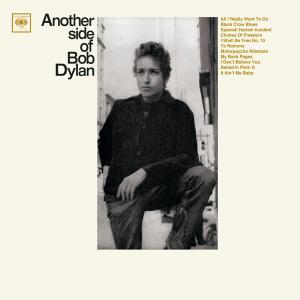
Another Side of Bob Dylan (1964)

1. All I Really Want To Do
2. Black Crow Blues
3. Spanish Harlem Incident
4. Chimes of Freedom
5. I Shall Be Free No. 10
6. To Ramona
7. Motorpsycho Nightmare
8. My Back Pages
9. I Don't Believe You (She Acts Like We
Never Met)
10.Ballad in Plain D
11.It Ain't Me, Babe
Another Side of Bob Dylan marked the closing chapter of Dylan’s early acoustic period—a final outing of voice, guitar, harmonica, and the occasional piano, before the electric revolution that would come to define the next stage of his career. But if 1964’s The Times They Are A-Changin’ had stood as a brooding monument to moral outrage, this follow-up represented a deliberate detour: less a continuation than a recalibration. Light-hearted, introspective, and laced with humor, it offered a glimpse into the elasticity of Dylan’s artistic identity.
Despite its title, Another Side was not an unprecedented reinvention. Rather, it marked a return to the tonal variety seen on The Freewheelin’ Bob Dylan, blending wit, sentiment, and casual surrealism in roughly equal measure. Gone, for the most part, were the strident calls to justice. Even the album’s longest track, the seven-minute Chimes of Freedom, cloaked its social commentary in poetic abstraction rather than polemic.
In songs such as Motorpsycho Nitemare and I Shall Be Free No. 10, Dylan embraces the role of comic raconteur. These are tall tales, playfully absurd, their narratives meandering but magnetic. He could have been mistaken for a stand-up folk satirist, had the lyrics not been so exquisitely constructed.
Elsewhere, tracks like To Ramona, All I Really Want to Do, and the now-iconic It Ain’t Me Babe offer tender resignation and emotional transparency. The latter, destined to be covered countless times, stands as one of Dylan’s most enduring dissections of romantic detachment.
Throughout the album, there’s a palpable sense of Dylan loosening his grip—not only thematically, but structurally. The recordings often include audible slips and imperfections, left in seemingly by design. It’s as though Dylan was reminding his audience—and perhaps himself—that art need not strive for perfection to convey truth. In doing so, he introduced a kind of performative looseness that would later be picked up by countless singer-songwriters in his wake.
Another Side of Bob Dylan is neither as focused as The Times They Are A-Changin’ nor as revolutionary as Bringing It All Back Home, but it is essential nonetheless. It occupies a liminal space in the Dylan canon, capturing an artist on the verge of transformation. It is Dylan unburdened—buoyant, ironic, and unafraid to meander. And if the songs occasionally run long or feel slight, their charm and confidence compensate amply.
In hindsight, this album was Dylan's quietest act of rebellion: not against the political structures he once skewered, but against the very idea that he should remain their spokesman. It was, in every sense, another side.
Go back to the main page
Go To Next Review